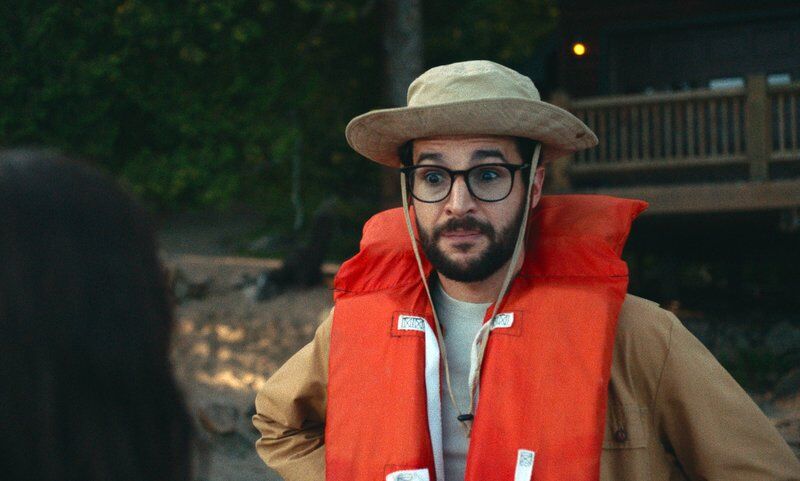Today I’ve got one for you that is 100% not for the faint of heart. Not in the least. While not out there with Midsommer, it is a hardcore decent into darkness the likes I haven’t seen since VVitch. (Which featured the glorious actor Anya Taylor-Joy who is now widely known for her role in glorious limited series on Netflix The Queen’s Gambit.) So if you really enjoyed VVitch, maybe Hagazussa is your next flick of interest? But it’s also confusing. And an extraordinarily convoluted 100 minutes that takes some work to de-tangle. Please do us a favor though, and don’t venture past this trailer if you haven’t seen the movie yet. Fair enough? Hagazussa Recommendation for VVitch Fans.
Hagazussa Recommendation for VVitch Fans
Again. Dark. Disconcerting. And relentlessly ruthless . And yet, visually glorious. Introspective. And beautiful. Lukas Feigelfeld’s freshman debut is really solid, impressively solid. But maybe just a bit too scarily solid. Okay, maybe one too many slow motion cuts of horse hooves, and the trees. But what, my friends, does even hagazussa even mean? Well, it comes from the High German haxa, which is a term for a witch, or the bizarrely occult.
Section 1 of the film, Shadows, introduces us to a young girl named Albrun (played by Aleksandra Cwen). Albrun lives with her mother in the Alps in the middle of the 15th century. Eventually, out of the blue, men dressed as goats come knocking on their front door and begin accusing her of being a witch, and calling for their immolation. In time, Albrun’s mother becomes sick, and they discover growths on her armpit. The doctor is certain that she is going to die, gives Albrun a high five, and leaves, leaving Albrun to sort out what to do with her dying mother. Well, shall we say that it doesn’t go well? Because it really doesn’t. Not at all. Albrun’s mother’s mental state plummets quickly. And Albrun is even assaulted sexually in the midst of all of this. Eventually, the mother goes running out into the cold of night and in the morning Albrun finds her mother’s dead body covered in snakes. Albrun knows, instinctively, that no one is coming to help… no. Why? because the entire region believes that she and her mother were witches.

Section 2 of the film, Horn, jumps forward 15 years. Albrun is still living in the same shack that her mother lived in. She has an infant now, and she tends goats. Um. Yeah. She tends goats. We’ll just leave it at that. The kids of the town treat Albrun horribly and we get the feeling that everyone in town still sees her a pariah. It’s obvious that the entire town sees her as a witch, or some sort of dark force to be avoided. However, a woman named Swinda helps Albrun when she was being harassed by the local boys. And later, Swinda swings by Albrun’s home to tell her that local pastor of the community wants to speak to her. Hrmm? So the two women go into to town together and the parson tells her that he came to the community to bring faith. He tells her that for the community to be strengthened, it means that all sacrilege be purged and cleansed. Uh, okay.
A little while later, Swinda and Albrun head out for a walk in the mountains. But when Swinda starts talking about those that don’t carry God in their hearts… you know, the Jews, and the heathens. (Yeah, my hackles went up too at that point.) Well, they come at night… like the animals…. and they take you. And a little while later you are left with a child on your hands. At which point a man joins them on their walk, and after Swinda whispers something to him, he embraces Albrun and then rapes her while she is held down by Swinda. (I told you this was a very, very dark movie. I mean, the goats man!) When she makes it home, she arrives to find that her goats have been stolen. Later that night, Albrun talks/prays/communes with her mother’s skull.
Do you see? The community has abused her. Given her a child with no father to step up for the task of fathering her. And this one friend, this one respite in the storm, has turned out to be horrible, more horrible than all the rest of the townspeople. And so Albrun, this village outcast, has been forced to become as evil as the town has expected her to be.
The third section? Blood. Albrun, who is now extraordinarily upset about how the villagers have treated her (which, is fair), decides she’ll drop a dead rat in the water supply in order to make the villagers sick. And during a subsequent visit to town with her daughter she watches as a number of dead people are being carried away. And on the way home, she eats a mushroom, which causes all manner of psychosis to hit her, and actually could put into question a lot of what happens next. And we watch as Albrun, who is tripping hard, heads into a gross looking stagnant pond with her daughter, and she lets her daughter drown.
Wait, did what I just saw happen, happen? Well, it’s a good question. Albrun did just take a psychotic mushroom, and it might allow for a number of different interpretations of the events we “watch happen.” The mushrooms muddy the water (sorry, couldn’t be helped) so to speak. This movie seems to be about perceptions. The way the townspeople perceive her, the way she perceives them, etc. But I am actually of the mind that this scene didn’t actually happen. Why? Well, because we get the sense that this was actually a flashback to the child’s birth. The excessive blood, and the water, seems to point to something else. A drowning baby doesn’t bleed at all, for one. I tend to think that the baby either died in childbirth, or soon after. And that the moment we see Albrun attempting to feed the baby and she doesn’t eat? It’s because the child was already dead. The maggots that accompanied the vision of her, tell us there has been a period of time since the baby died. And it is only once she is in the pond water that she realizes that the baby was already dead.

Part four, Fire. Buckle up. Well, after the adventure in the pond, Albrun is sleeping. And during her sleep, a snake slithers its way over Albrun. After she wakes, she hears the voice of her mother calling her name. And as she walks towards the sound of her mother’s breathing, she discovers the body of her dead child. (Whether drowned or stillborn, she’s still dead.) And she is struck with horror from the sadness of it all. After which, she places the child’s corpse in the soup that is boiling over the fire. After eating some of the soup, she pukes horribly. And the mushroom psychosis seems to seize hold of her over again. And there, her mother is standing and laughing at her. The shadows on the walls scare her terribly, causing her to run for her life. And there, in the scenic mountainside, Albrun lies down and dies. As the sun comes up, her body catches fire.
The ending of Hagazussa Explained
Look, this is a hard one to wrap your head around. I mean, just to come to terms with. She souped her child? Really? Well, Albrun actually had been told by her mother and the community that her mother was a witch, and that she too was cursed. So it could very well be that she is drugged out of her mind and just doing what everyone tells her she is. Evil. But I’m not convinced that she ate the baby at all. More likely, in my mind? It makes much more sense that she actually placed her beloved goat in the soup kettle instead. There is really no way to know one way or other. And we’ve already noted that her memories and perceptions are not reliable, like at all.
And you know what? I’m going to actually argue, that there might very well not have been a baby in this movie. Period. At all. Why would I say that? Well, she is literally alone most of the movie, and rarely do we see her with her child. How would that be possible? And if the baby miscarried, or died right after birth, then it adds up that she was never in public with an actual child. But the baby carrier scarf thing man!?!? Well, sure, but does that baby ever cry? Do we ever see her look down at it, and go… ohhh, super cute baby? Do we? No, we don’t. That didn’t happen. So, either she was carrying around a dead baby, which, I’ll grant you… is pretty scuffed. Or she was carrying something else in there entirely.
Now, either the movie was specifically about Albrun being a witch. Or, maybe the movie was more likely a movie about living in the 15th century during the time of the black plague. Let that soak for a moment. Even today during our global pandemic, even in a “modern” society, we watch as people talk about tripling up on supplements to stop from getting Covid. And that is a myth. Sorry if I just hurt your feelings… but deal with it. And worse? People taking colloidal silver as a remedy! Crazy. Now, warp back 600 years and think about it. Could it be that the town, which was suffering from an outbreak of the black plague was wanting to cast blame somewhere… anywhere. And so they picked Albrun’s mother, the “witch”? Or Albrun herself? Now imagine attempting to live under this kind of burden, the weight of the guilt of causing a murderous outbreak? Could it be that as the entire town was out to get Albrun, and like The Spinning Man, she finds the weight of their assumptions damning? Stranger things have happened….. But I don’t think we’ve seen a stranger movie regardless of what is really going on. I don’t know, what did you guys think of the movie? Do you think she’s a witch? (Well, she did combust, didn’t she?) Or do you think she’s innocent? Or better yet, maybe it’s neither pro or con and more of a picture of uneasiness in the middle.
Personally, I believe that Feigelfeld has created a disturbingly introspective and deeply disturbing verisimilitude of the 1500’s. A period filled with horror and suspicion where women were doubted, and disease parades as satanic forces. But the hitch here is that, for those who are looking, there are semblances of similarities between this long ago age, and our own. If we are looking.
Edited by: CY



